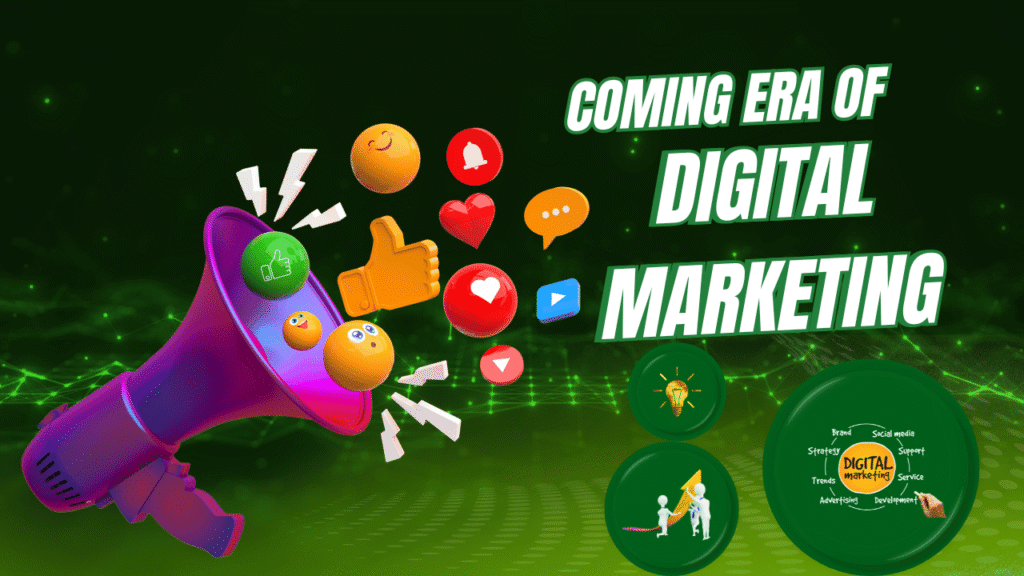
THE COMING ERA OF DIGITAL MARKETING
The world around us is changing at an unprecedented pace, and the way people discover, interact with, and buy from businesses is evolving just as quickly. Traditional marketing methods such as newspapers, TV ads, flyers, and billboards are no longer enough to reach today’s connected audience. The coming era of digital marketing is transforming how businesses communicate, build relationships, and grow, offering smarter, faster, and more personal ways to connect with people.
One of the most significant advantages of digital marketing is the ability to reach the right audience. In the past, businesses often had to rely on guesswork, hoping that a TV ad or newspaper spread would reach the right people. Today, digital platforms like Google, Facebook, and Instagram allow businesses to target specific demographics, interests, and behaviors. This means that your message reaches the people who are most likely to engage with it, saving both time and money. A well-targeted campaign is not just more cost-effective—it’s also far more impactful, creating meaningful connections rather than just impressions.
Personalization is another hallmark of the future of marketing. People no longer respond well to generic ads or messages. They want content that feels relevant to their needs, interests, and lifestyle. Digital marketing allows businesses to create these personalized experiences through emails, social media posts, video content, and interactive campaigns. For instance, a customer who browsed a product online can receive a targeted offer, while another user might get educational content that matches their interests. This kind of personalization builds trust, encourages engagement, and makes your brand more memorable.
Technology is driving a major shift in how marketing works. Artificial intelligence, machine learning, chatbots, and data analytics are helping businesses understand customer behavior better than ever before. AI can predict what products or services a customer might be interested in, suggest the best time to send a message, and even create automated campaigns that respond in real time. This level of intelligence was impossible with traditional marketing methods, and it is redefining how brands interact with customers. Businesses can now make informed decisions based on real data, continuously optimizing campaigns for better results.
Another critical feature of digital marketing is its long-term value. Traditional ads often disappear after a day, week, or month. Digital content such as blogs, videos, and social media posts can continue working for months, even years. A single well-written blog post or an engaging video can attract new customers, improve search engine rankings, and strengthen your brand reputation over time. This makes digital marketing not just a tool for short-term sales but a long-term strategy for growth and brand building.
Finally, the coming era of digital marketing is all about creating authentic connections. People increasingly want brands that listen, respond, and interact with them rather than simply push messages. Social media, live chats, and interactive content make two-way communication possible, allowing businesses to respond quickly to feedback and build a loyal customer base. Those brands that engage genuinely will stand out in a crowded market, while those that stick to one-way messaging risk being overlooked.
Finally, the future of marketing is digital, interactive, and customer-focused. It is no longer enough to simply advertise; businesses must be visible, accessible, and responsive. The coming era of digital marketing offers endless opportunities to reach the right audience, deliver personalized experiences, leverage advanced technology, and create content that continues to work overtime. Businesses that embrace this change will not only survive but thrive in a world where connection, engagement, and relevance are the keys to success.
